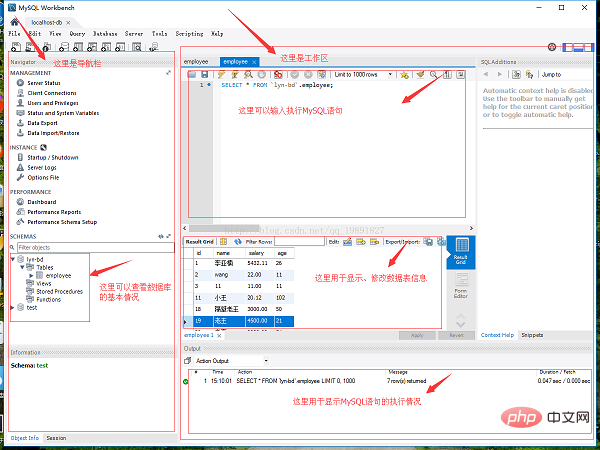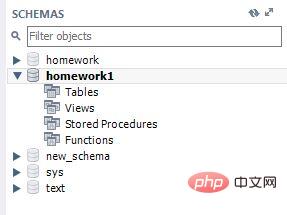
Workbench is an ER and database modeling tool designed specifically for MySQL. It provides visual design, model building, and database management functions, helping to create new physical data models and reverse or Forward engineering and change management capabilities for modifying existing MySQL databases.

The operating environment of this tutorial: windows7 system, MySQL Workbench version 6.3.9, DELL G3 computer
Workbench is a program specially designed for MySQL ER and database modeling tool, an integrated desktop software, is also a next-generation visual database design and management tool. It has both open source and commercial versions. The software supports Windows and Linux systems and can be downloaded from https://dev.mysql.com/downloads/workbench/.
MySQL Workbench is a visual database design software that helps create new physical data models and modify existing MySQL databases through reverse or forward engineering and change management capabilities. It also supports all components that make up the database. Objects such as tables, views, stored procedures, triggers, etc.
MySQL Workbench provides visual design, model building, and database management functions for database administrators, program developers, and system planners. It includes tools for creating complex data modeling ER models, forward and reverse database engineering, and can also be used to perform documentation tasks that often take a lot of time and require difficult changes and management. MySQL Workbench is available on Windows, Linux, and Mac.
Layout introduction

First step: Click on the red area in the picture below

## Step 2: Name the database and press Press Apply, Apply and finish in order




 ##Step 2: Right-click and select tables , select create tables;
##Step 2: Right-click and select tables , select create tables;
 ##Step 3: Fill in the table Field information
##Step 3: Fill in the table Field information
PK: primary key primary key NN: not null non-empty

Import data
Step 2: Small amount of data Write

 Three steps: A large number of data import methods
Three steps: A large number of data import methods
Method one:
Click the button pointed by the arrow, select the .csv file (save excel as a sub-type file), confirm to complete the import; however, this method has a flaw, it is imported in the order of the fields in the table. , all excel fields need to be in exactly the same order as the fields in the table. If not, just insert empty columns in excel;

Method 2:
It is more complicated, but manual correspondence can be achieved:
1. Select the table to be imported and right-click, as shown in the figure: [Never select the first one]

2. Select the imported file to be prepared, and then continue to next

Note: Click the button marked with a red circle to pop up the options (Opinions). Select CR LF (windows system "/r/n") at the line interval; encoding format utf-8; select the corresponding field in the list part as needed; then click Next until the execution is completed, and the data import is completed;

[Related recommendations: mysql video tutorial]
The above is the detailed content of What does workbench do?. For more information, please follow other related articles on the PHP Chinese website!